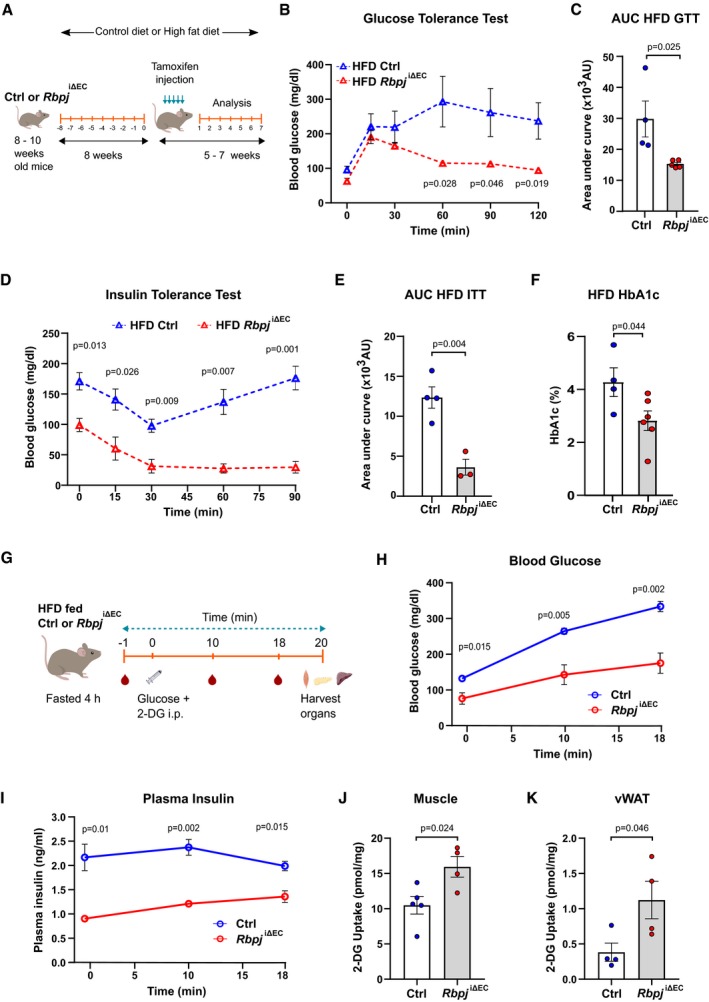-
A
Schematic illustration of feeding and recombination protocol.
-
B
Blood glucose levels for glucose tolerance test (GTT) of control (n = 4) or Rbpj
iΔEC (n = 5) mice kept on high‐fat diet (HFD). Data represent unpaired t‐test, mean ± SEM.
-
C
Quantification of area under curve (AUC) for GTT in (B). Data represent mean ± SEM, unpaired t‐test.
-
D
Blood glucose levels for insulin tolerance test (ITT) of control (n = 4) or Rbpj
iΔEC (n = 3) mice kept on HFD. Data represent unpaired t‐test, mean ± SEM.
-
E
Quantification of AUC for ITT in (D). Data represent mean ± SEM, unpaired t‐test.
-
F
HbA1c levels of control (n = 4) or Rbpj
iΔEC (n = 6) mice kept on HFD 7 weeks after recombination. Data represent mean ± SEM, unpaired t‐test.
-
G
Schematic illustration of 2‐DG uptake assay protocol for control and Rbpj
iΔEC mice on HFD.
-
H
Blood glucose levels of control and Rbpj
iΔEC mice on HFD during 2‐DG uptake assay. n = 5, data represent mean ± SEM, unpaired t‐test.
-
I
Plasma insulin levels of control and Rbpj
iΔEC mice on HFD during 2‐DG uptake assay. n = 5, data represent mean ± SEM, unpaired t‐test.
-
J
2‐DG uptake levels in skeletal muscle of control (n = 5) and Rbpj
iΔEC (n = 4) mice on HFD. Data represent mean ± SEM, unpaired t‐test.
-
K
2‐DG uptake levels in vWAT of control and Rbpj
iΔEC mice. n = 4, data represent mean ± SEM, unpaired t‐test.

